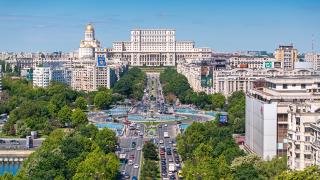With falling domestic consumption and foreign direct investment offering limited demand at home and the Syrian war disrupting regional export routes, Lebanon’s cement producers are cutting costs and reducing output. However, the long-term scenario offers improved opportunities both within and beyond the country’s borders. By Riwa Daou, Blominvest Bank, Lebanon.
Since 2011 the Lebanese economy has been burdened by regional and local instabilities. The Syrian crisis and an extended political deadlock that has left a vacant presidential seat for over two years have had a significant impact on the country.
Lebanon’s real GDP growth took a sharp turn away from the high 8-10 per cent seen between 2007-10 to a meagre range of 0.9-2.8 per cent between 2011-14 (see Figure 1). The activity of vital economic sectors such as construction and real estate receded as foreign investments shrank and local demand weakened. The tourism sector no longer thrives on heavy spending by tourists from Gulf Cooperation Council (GCC) countries as several and repeated travel bans issued by GCC governments prevented their nationals from visiting Lebanon.
